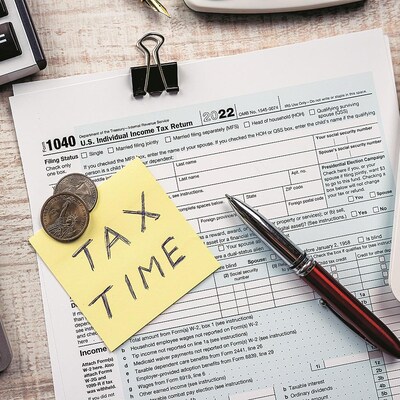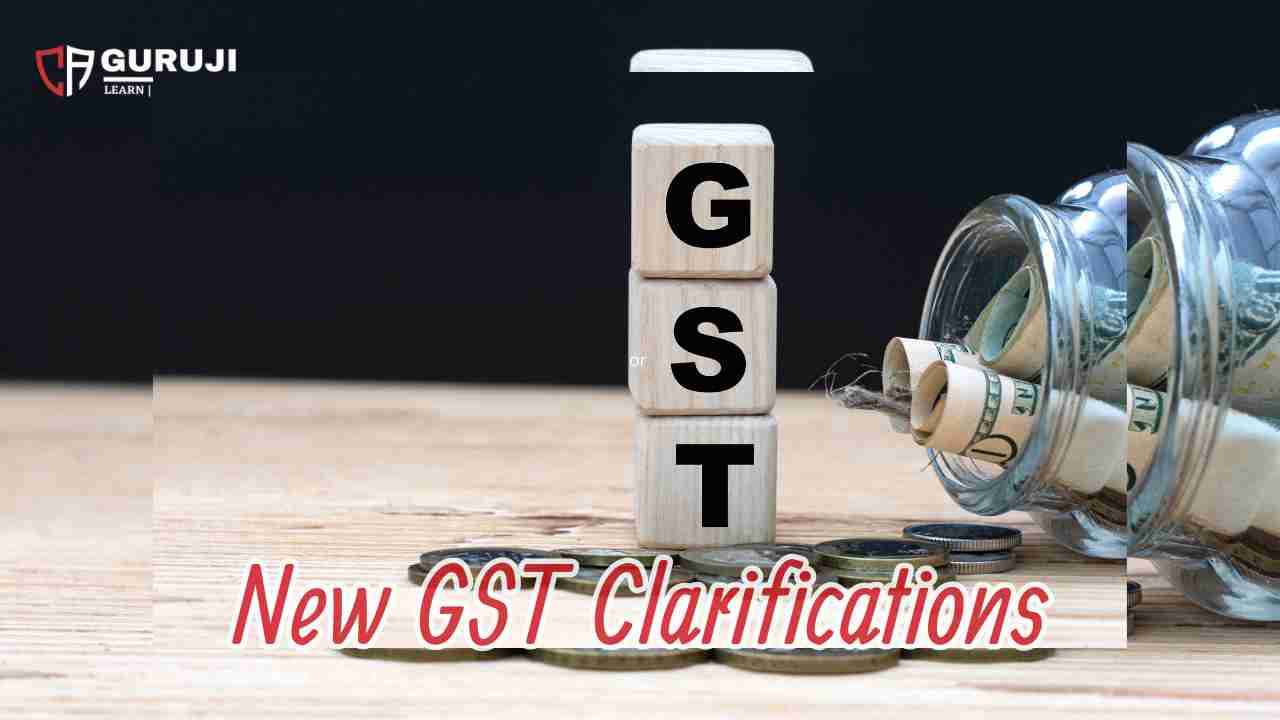A trademark the most precious Intangible Asset. Selection of a good Trademark will distinguishes the goods & services from the other’s. A poor trademark may lead to Trademark infringement and dull your efforts.
For instance, consider the following scenario:
Imagine you’re starting a new line of premium coffee blends. You have the choice between two potential trademarks: “FineCup Coffee” and “VelvetBrew.”
“FineCup Coffee” is descriptive and merely outlines the quality of the coffee and the type of product. This choice lacks distinctiveness and could be challenging to protect legally. Moreover, if other coffee brands were to use similar descriptions, it could lead to confusion among consumers and potential legal disputes.
On the other hand, “VelvetBrew” is a creative and distinctive trademark. It doesn’t directly describe the coffee but conveys a sense of luxury and a unique experience. This choice has the potential to stand out in a competitive market and become recognizable to consumers.
By opting for “VelvetBrew” as your trademark, you not only differentiate your coffee from others but also reduce the risk of trademark infringement. The unique and imaginative nature of the trademark helps safeguard your brand’s identity and makes it easier for customers to remember and associate with your high-quality coffee blends.
In this example, the distinction between a poor trademark (“FineCup Coffee”) and a strong one (“VelvetBrew”) showcases the impact of a well-thought-out choice on brand identity, recognition, and legal protection. A strong trademark serves as a valuable asset, supporting your business’s growth and reputation while avoiding the pitfalls associated with weak or generic trademarks.
Important facts should be keep in Minds while Selecting Good Trademarks:
Selecting an effective trademark is a pivotal decision with far-reaching implications. It’s not just a label; it’s the essence of your brand, differentiating your goods and services from the competition.
A well-chosen trademark can become a valuable asset, while a poor choice might lead to trademark infringement issues and undermine your branding efforts.
To guide you in the selection process, remember these essential factors:
- Distinctiveness: Aim for a trademark that stands out. Steer clear of generic terms or commonplace phrases that fail to set your brand apart. A strong trademark captures attention and leaves a lasting impression.
- Avoid Descriptive Terms: Stay away from trademarks that directly describe the goods or services you offer. These tend to be weak and provide little legal protection. Instead, opt for terms that evoke an image or feeling without explicitly spelling out the product.
- Non-Suggestive: Select a trademark that doesn’t blatantly suggest the characteristics of your offerings. Striking a balance between distinctiveness and relevance is key. A suggestive trademark hints at your product’s nature without giving everything away.
- Memorability: Your trademark should be easy to remember and recall. Simplicity is often more effective than complexity. Consider how the trademark will sound and look in various contexts to ensure it sticks in people’s minds.
- Avoid Confusion: Thoroughly research existing trademarks to avoid similarities that could lead to confusion among consumers. Legal disputes can arise from using a trademark that’s too similar to another, potentially tarnishing your brand’s reputation.
- Future Growth: Think beyond your current offerings. Choose a trademark that accommodates potential expansion into new products or services without losing relevance or meaning.
- Questions to Ask Yourself:
- Is the trademark distinctive and unique within its industry?
- How it is unique with others
- Can it be easily pronounced and remembered?
- Is it short, clear, and free of unnecessary complexities?
- Does it pass a preliminary search for similar trademarks?
- Could it limit or hinder business growth in the future?
- Does it have the potential to become widely recognized and associated with your brand?
Incorporating these considerations into your trademark selection process ensures that you’re crafting a unique, memorable, and legally defensible brand identifier. It’s an investment in your brand’s long-term success, offering a competitive edge and safeguarding your business from potential infringement challenges.
Our Detailed Trademark Course Below:
TYPES OF ASSETS
ASSETS can be broadly classified into two category
1. Tangible Assets (Example: Furniture, Computers & Machinery)
2. Intangible Assets (Example: goodwill, Trademark, Patents, Geographical indication & copyrights .
Intangible Assets are of two types
1. Trademark, Patents, Geographical indication & copyrights
2. Goodwill
A Complete Guide to Intellectual Property
Registering intellectual property (IP) is crucial for safeguarding your creative and innovative assets . The process involves protecting your creations, inventions, and ideas from unauthorized use, thereby granting you exclusive rights to use and exploit them. The following guide provides a comprehensive overview of the intellectual property registry process:
Types of Intellectual Property:
- Copyright: Protects original literary, artistic, musical, and dramatic works.
- Trademark: Guards logos, brand names, and distinctive signs that identify products and services.
- Patent: Secures new inventions, processes, and technological advancements.
- Design: Protects the visual design and aesthetics of products.
- Geographical Indication (GI): Shields products originating from a specific geographical region and possessing unique qualities.
Copyright Registration:
- Eligibility: Any creator or owner of original literary, artistic, musical, or dramatic works can apply.
- Process: Fill out Form XIV, attach the necessary documents, and submit them along with the prescribed fee to the Copyright Office.
- Timeframe: The processing time can vary but usually takes a few months.
Trademark Registration:
- Eligibility: Individuals, businesses, and legal entities can apply to protect their unique brands.
- Process:
- File an application (Form TM-A) with the Trademark Registry, either physically or online.
- Once the application is filed, it is assigned an application number and examined for uniqueness.
- If no objections are raised, or objections are overcome, the trademark is published in the Trademark Journal.
- After publication, if no oppositions are filed by third parties within the stipulated time, the trademark is registered.
- Timeframe: The entire process can take 1-2 years or longer, depending on objections and oppositions.
Patent Registration:
- Eligibility: Inventors and creators of novel and non-obvious inventions can apply.
- Process:
- File a patent application (Form 1) with the Patent Office.
- The application undergoes examination for novelty, non-obviousness, and industrial applicability.
- If the patent is granted, the applicant gains exclusive rights for a certain period.
- Timeframe: Patent processing can take several years due to the complexity of the examination process.
Design Registration:
- Eligibility: Creators of new and original designs can apply.
- Process:
- File an application (Form-1) with the Design Office.
- The application undergoes examination for novelty and originality.
- Once approved, the design is registered for a specific period.
- Timeframe: The processing time varies but generally takes a few months.
Geographical Indication (GI) Registration:
- Eligibility: Producers of goods with unique qualities attributable to their geographical origin can apply.
- Process:
- File an application (Form GI-1) with the Geographical Indications Registry.
- The application is examined for compliance with the Geographical Indications of Goods (Registration and Protection) Act, 1999.
- If approved, the GI is registered.
- Timeframe: The processing time can vary but typically takes over a year.
Renewal and Enforcement:
- IP rights need periodic renewals to maintain their protection.
- Enforcing IP rights involves legal actions against infringements through civil or criminal proceedings.
FEW EXAMPLES OF TRADEMARKS:
Selecting a Good Trademark:
Selecting a good trademark is essential for building a strong brand identity and avoiding legal conflicts. A strong trademark should be distinctive, memorable, and not likely to cause confusion with existing trademarks. Here are some key tips and examples to consider when selecting a trademark:
- Distinctiveness: The more distinctive your trademark is, the better it will stand out from competitors. Avoid using generic or descriptive terms.
Example: “Apple” for computers and electronics. This term is unrelated to the product itself and therefore highly distinctive. - Memorability: A good trademark is easy to remember, which helps in brand recognition and recall.
Example: “Coca-Cola” is a memorable and unique name that has become synonymous with its product. - Simplicity: Keep your trademark simple and easy to pronounce to make it more accessible to a broader audience.
Example: “Nike” is a simple and easy-to-pronounce trademark known worldwide for sportswear and equipment. - Uniqueness: Conduct thorough research to ensure your trademark is not already in use or registered by someone else in your industry.
Example: “McDonald’s” is a unique trademark that has become synonymous with fast-food restaurants. - Avoid Common Words: Avoid using common words or phrases that are commonly used in your industry. This reduces the risk of confusion with other brands.
Example: “Amazon” for an online retail giant, which is distinct from the traditional meaning of the word. - Avoid Generic Terms: Generic terms cannot be protected as trademarks because they describe the product or service itself.
Example: “Computer Store” would likely not be accepted as a trademark for a computer retail store due to its generic nature. - Considerations for International Expansion: Ensure that your chosen trademark doesn’t have negative connotations or meanings in other languages or cultures.
Example: The car brand “Nova” faced challenges in Spanish-speaking countries, as “no va” translates to “it doesn’t go.” - Domain Name Availability: Check if the domain name corresponding to your trademark is available. Having a consistent online presence is crucial.
Example: “Google” has a strong online presence with a matching domain name. - Avoid Acronyms Unless Well-Known: Acronyms can be challenging to protect and might not convey your brand identity unless you’re a well-established company.
Example: “IBM” works because it’s a widely recognized acronym for “International Business Machines.” - Flexibility for Growth: Choose a trademark that can accommodate potential business expansion into new product lines or markets.
Example: “Apple” started with computers but expanded to various technology products and services.
TOP 10 TRADEMARKS SHOULD BE AVOIDED THAT CAN’T BE REGISTERED.
TOP 10 TRADEMARKS SHOULD BE AVOIDED THAT CAN’T BE REGISTERED
- Marks Against Moral Standards or Public Order: Trademarks that are offensive, immoral, or contrary to public order and morality are generally rejected
- .
- Broad and Generic Terms: Trademarks that consist of common words or terms with a broad meaning are often considered too descriptive and lacking in distinctiveness.
- Representation of Royal Family: Using trademarks that involve the names or representations of royal families may lead to legal issues, especially if not authorized.
- Bad Faith Applications: Applying for trademarks with the intention to block competitors or misuse them for personal gain rather than for legitimate business purposes may be rejected.
- Illegal Words in India: Using words that are illegal or prohibited under Indian law is not permissible for trademarks.
- Lack of Distinctiveness: Trademarks that are too generic or common do not exhibit the required level of distinctiveness for registration.
- Deceptive Marks: Trademarks that mislead consumers about the nature, quality, or origin of the goods or services may be refused registration.
- Unauthorized Use of Flags/Symbols: Unauthorized use of national or international flags, symbols, and names of organizations or states/nations may not be accepted.
- Geographic Locations: Names of geographic locations can be challenging to register if they are not distinctive and could cause confusion.
- Three-Letter Acronyms and Numbers: Short acronyms and numbers are often avoided due to their lack of distinctiveness, unless they have become widely
- Recognized.
HOW TO CONDUCT TRADEMARK SEARCH IN INDIA?
- Visit the Official Website: Go to the official website of the Indian Trademark Registry: https://ipindiaonline.gov.in/
- Navigate to Trademarks Section: Look for the “Trade Marks” tab or section on the website’s main menu. Click on it to access trademark-related services.
- Search for Trademark:
- Under the “Trade Marks” section, you’ll find options for searching trademarks. Click on “Public Search of Trade Marks.”
- Alternatively, you can directly access the trademark search portal: https://ipindiaonline.gov.in/tmrpublicsearch/frmmain.aspx
- Use the Search Interface:
- On the trademark search page, you will find various search options.
- Select the appropriate search type. For a wordmark search, choose the “Wordmark” option.
- Enter Search Criteria:
- In the search fields, enter the word or phrase you want to search as a trademark.
- You can also specify the trademark class if you know it. Trademarks are classified into different classes based on the type of goods or services.
- Start the Search:
- After entering the search criteria, click on the “Search” button.
- Review Search Results:
- The search results will display trademarks that match your search criteria.
- You’ll see details such as the trademark name, class, application number, status, and owner.
- Analyze Similar Trademarks:
- Examine the search results to see if there are any trademarks that are similar to the one you want to use.
- Pay attention to the class, status, and owner of the trademarks.
- Refine Your Search (Optional):
- If you get too many results, you can refine your search by using additional filters or adjusting your search criteria.
Who can apply for trademark registration?
- Individuals: Any individual person can apply for trademark registration. This includes sole proprietors who run their own businesses.
- Companies: Companies, whether private limited, public limited, or one person company (OPC), can apply for trademark registration. This includes both Indian and foreign companies.
- Partnership Firms: Partnership firms, which are associations of two or more individuals or entities working together for a business purpose, can apply for trademark registration.
- Limited Liability Partnerships (LLPs): LLPs, which are a form of legal entity with features of both a partnership and a company, are eligible to apply for trademark registration.
- Trusts and Societies: Trusts and societies, which are nonprofit organizations formed for social, charitable, or educational purposes, can apply for trademark registration.
- Government Entities: Government departments and agencies can also apply for trademark registration.
- Foreign Entities: Foreign individuals, companies, or entities that wish to do business in India can apply for trademark registration. They can either directly apply or through an authorized agent.
- Startups: Startups, as recognized by the Department for Promotion of Industry and Internal Trade (DPIIT), may be eligible for certain benefits, including reduced trademark filing fees.
- Legal Representatives: Trademark registration can also be applied for by legal representatives of deceased or incapacitated individuals or entities.
Can I apply for a trademark myself?
Yes, you can personally apply for a trademark. It involves submitting an application to the appropriate trademark office, detailing your mark and its intended use.
TRADEMARK REGISTRATION
Search: Conduct a trademark search to ensure your desired trademark isn’t already registered or too similar to existing ones.
- Application: Prepare the application form (Form TM-A) with all necessary details, including the applicant’s information, trademark image, and class of goods/services. You can file this online through the official website of the Intellectual Property India.
- Examination: The trademark office will examine your application for compliance and potential conflicts. If there are any objections, you’ll receive an examination report.
- Response: If there are objections, you can file a response within the stipulated timeframe, addressing the concerns raised by the trademark office.
- Publication: If the trademark application is accepted, it will be published in the Trademark Journal for public notice. Others can oppose your registration during this time.
- Opposition: If there are no oppositions or if you successfully overcome any opposition, your trademark will proceed to registration.
- Registration: Upon successful completion of the process, you will receive a registration certificate for your trademark.
Eligibility Criteria for Trademark Registration in India:
To be eligible for trademark registration in India, your proposed trademark must adhere to certain criteria. These criteria ensure that your trademark is distinctive, not misleading, and doesn’t infringe on existing rights. Here are the key eligibility factors:
- Distinctiveness: Your trademark should have distinctive qualities that set it apart from common or descriptive terms. It should be capable of identifying your goods or services uniquely.
- Non-Deceptiveness: The trademark must not mislead or deceive consumers about the origin, quality, or characteristics of your goods or services.
- Non-Offensiveness: The trademark should not be offensive, immoral, or against public order or decency.
- Uniqueness: Your trademark should not be identical or confusingly similar to existing trademarks in the same or related categories. This prevents confusion among consumers.
- Intent to Use: While actual use before filing isn’t mandatory, you must have a genuine intention to use the trademark for the specified goods or services in the future.
- Proper Classification: Your trademark must align with the correct class(es) of goods or services as per the classification system. Accurate categorization is essential.
- Absence of Prohibited Symbols: Trademarks containing prohibited symbols, such as the national emblem, are ineligible for registration.
- Non-Descriptiveness: Marks that are purely descriptive of the goods or services they represent might not be eligible. However, they could gain distinctiveness over time through extensive use.
- No Conflicting Rights: Your trademark must not infringe on existing trademark rights held by others. Conducting a comprehensive trademark search is crucial to ensure uniqueness.
- Applicant’s Qualification: Both individuals and entities like companies, LLPs (Limited Liability Partnerships), and others are eligible to apply for trademark registration.
- Geographical Indications and Well-Known Marks: Geographical indications and well-known marks are also eligible for protection under specific provisions.
BASICS FACTS OF TRADEMARK REGISTRATION
- Definition: A trademark is a unique symbol, word, phrase, logo, design, or combination used to identify and distinguish goods or services from others in the marketplace.
- Purpose: Trademark registration offers legal protection, preventing unauthorized use and imitation by others. It helps build brand recognition and consumer trust.
- Exclusive Rights: Trademark registration grants you exclusive rights to use the mark for the specified goods or services within the chosen class.
- Territorial: Trademark rights are territorial, meaning they apply only within the jurisdiction where the mark is registered.
- Classes: Goods and services are classified into classes. When registering a trademark, you must specify the relevant class(es) that correspond to your offerings.
- Duration: Trademark protection lasts for a specific duration (e.g., 10 years in many countries) and can be renewed upon expiration.
- Distinctiveness: Distinctive and unique marks are more likely to be registered successfully. Generic or descriptive terms might face challenges
- .
- Application Process: The registration process typically involves filing an application, examination by the trademark office, publication for public notice, and potential opposition by third parties.
- Search: Conduct a comprehensive trademark search before applying to ensure your mark isn’t already registered or too similar to existing ones.
- Benefits: Trademark registration enhances brand identity, enables legal action against infringers, and can increase the value of your business.
- Geographical Indications: Some marks, like geographical indications, indicate a specific origin and qualities tied to a certain location.
- International Protection: Through international agreements like the Madrid Protocol, you can seek trademark protection in multiple countries using a single application.
- Renewal: Regularly renew your trademark to maintain protection. Failure to renew can result in loss of rights.
- Enforcement: Trademark owners are responsible for enforcing their rights. Legal action can be taken against those who infringe on your trademark.
- Legal Expertise: Consulting with intellectual property professionals or attorneys can help navigate the registration process and address legal issues.
TOP 10 BENEFITS OF TRADEMARK REGISTRATION IN INDIA
- Exclusive Rights: Registration grants you exclusive rights to use the trademark for the specified goods or services in the chosen class, protecting your brand identity.
- Legal Protection: You gain legal protection against unauthorized use, imitation, and infringement by others.
- Brand Recognition: A registered trademark helps build strong brand recognition and establishes your business’s unique identity.
- Consumer Trust: A recognized trademark enhances consumer confidence, as customers associate your mark with consistent quality and authenticity.
- Asset Value: A registered trademark becomes a valuable business asset, contributing to your brand’s overall worth.
- Market Advantage: A registered trademark gives you a competitive edge in the market by distinguishing your offerings from those of competitors.
- Expansion Facilitation: A registered mark can simplify expansion into new markets and sectors by providing a recognized brand identity.
- Legal Recourse: Registered trademarks enable legal action against infringers, allowing you to protect your brand and seek damages.
- Licensing and Franchising: Trademark registration enables you to license or franchise your brand, generating additional revenue streams.
- Global Protection: Trademark registration can facilitate international expansion through agreements like the Madrid Protocol, allowing protection in multiple countries using a single application.
TRADEMARK REGISTRATION PROCESS FOR BRANDS IN INDIA
The trademark registration process for brands in India involves several stages to ensure the protection and recognition of your brand identity. Firstly, it’s crucial to conduct a comprehensive trademark search to ensure that your desired brand name or logo is not already registered or similar to existing trademarks. Once you’re certain about its uniqueness, you can proceed to file the trademark application online through the official Intellectual Property India website. This application includes essential details such as your brand name/logo, information about the applicant, and the specific class or classes of goods/services associated with your brand.
Following the application, the trademark office examines it for compliance with legal requirements and potential issues. If no objections arise or if you successfully address any objections raised, your trademark application is published in the Trademark Journal. This publication serves as a public notice, allowing others to raise objections if they believe your brand’s trademark conflicts with their rights.
In the event of an opposition, a formal legal process is initiated, during which both parties present their arguments and evidence. The Trademark Registrar considers this information to make an informed decision, which could be in favor of registration, dismissal of the opposition, or refusal of your application. If your application is accepted, and there are no further legal challenges, your brand’s trademark is registered, and you receive a trademark registration certificate.
Remember that trademark registration is an ongoing process that requires periodic renewal to maintain its validity. As the specifics can vary and legal intricacies might arise, seeking guidance from legal professionals and staying updated with the official Intellectual Property India guidelines is advisable for a successful trademark registration journey for your brand in India.
DOCUMENTS REQUIRED FOR TRADEMARK REGISTRATION FOR PROPRIETORSHIP BUSINESS:
- Brand Name/Logo: A clear representation of your brand name and logo in the specified size and format.
- Applicant’s Details: Complete details of the proprietor, including name, address, and nationality.
- Business Details: Information about the proprietorship business, including its name, address, and type of goods/services offered.
- Authorization Letter: If you’re not filing the application personally, you might need an authorization letter designating someone to act on your behalf.
- Power of Attorney: If an attorney or legal professional is handling the registration process for you, a power of attorney might be required.
- Goods/Services Details: A clear description of the goods or services associated with your brand.
- Trademark Usage Date: The date when you first started using the trademark in connection with your goods or services.
- Trademark Application Form: The application form (Form TM-A) filled out with accurate details.
- Identity Proof: Identity proof of the proprietor, such as a PAN card, Aadhar card, or passport.
- Address Proof: Address proof of the proprietor, such as a utility bill, rental agreement, or Aadhar card.
- D
TRADEMARK EXAMINATION REPORT
A trademark examination report is an official document issued by the trademark office during the trademark registration process in India. This report represents the results of the initial evaluation of your trademark application by the authorities. It highlights any potential issues, concerns, or objections that need to be addressed before your trademark can be successfully registered. These issues could encompass matters such as similarity to existing trademarks, descriptive nature of the mark, or other regulatory requirements.
The examination report serves as a crucial communication between the trademark office and the applicant, outlining the specific reasons for the objections raised against your application. Additionally, the report provides a timeframe within which you must respond to the objections, usually around one month from the report’s issuance date. During this period, you’re required to provide appropriate responses, evidence, arguments, or modifications that address the concerns raised in the report.
Responding effectively to the examination report is pivotal, as it can significantly impact the outcome of your trademark registration process. Thoroughly understanding the objections and seeking professional guidance if needed can ensure that your responses are accurate, comprehensive, and aligned with the legal requirements. Failure to respond within the stipulated timeframe may result in the abandonment of your application. Therefore, carefully reviewing and responding to the examination report is a critical step towards achieving successful trademark registration.
What is Reply to the Examination Report?
A “Reply to the Examination Report” is a formal response to objections raised by the trademark office during the trademark registration process. It addresses concerns and provides evidence to resolve issues and move the application forward.
Who can file Reply to the Examination Report?
Anyone who has applied for a trademark and received an examination report with objections from the trademark office can file a “Reply to the Examination Report.” This reply is a way to respond to the concerns raised by the trademark office and provide explanations or evidence to resolve those concerns and continue with the trademark registration process.
TRADEMARK RENEWAL
Trademark renewal is the process of extending the validity of a registered trademark. It involves paying a renewal fee to maintain the exclusive rights and protection provided by the trademark registration. Renewals are typically required every certain number of years, such as every 10 years in many jurisdictions.
TRADEMARK RESTORATION
Trademark restoration refers to the process of reinstating a trademark that has been removed from the register due to non-renewal or failure to comply with renewal requirements. If a trademark registration has lapsed due to the owner’s failure to renew it within the prescribed period, restoration allows the owner to regain the protection and rights associated with the trademark by applying for reinstatement and fulfilling specific requirements set by the trademark office. The restoration process can vary based on jurisdiction and the specific circumstances of the case.
How Trademark Restoration can be done in India?
in India, trademark restoration can be initiated by the trademark owner within six months to one year after the expiration of the registered trademark. This is done by submitting Form TM-R along with the restoration fee of Rs. 9000 per class and the renewal fee of Rs. 9000. When the Registrar of Trademarks receives Form TM-R and the fees, they assess the situation and, if deemed appropriate, can restore the trademark to the register. This restoration process also involves renewing the trademark registration for a period of 10 years from the expiration of the previous registration. It’s important to adhere to the specified timeframes and requirements for a successful restoration of the trademark.
What is the effect of removal of Trademark registered in India?
he removal of a trademark registered in India due to non-payment of renewal fees has certain effects. Specifically, even though the trademark has been removed from the register, it is still considered, for a period of one year after the removal date, as if it is a registered trademark. This means that during this one-year period, if someone applies for the registration of another trademark, the removed trademark is treated as if it is still on the register.
However, this presumption can be challenged under certain conditions. The Trademark Tribunal can investigate and consider the following factors:
a) If there has been no genuine and legitimate trade use of the removed trademark in the two years leading up to its removal.
b) If using the removed trademark in the new application for registration would not cause confusion or deception due to the previous use of the removed trademark.
In other words, the removed trademark is given some continued recognition for a year, but if certain conditions are met, its presumed existence on the register can be disputed. This provision helps ensure that a trademark is not removed and then immediately replaced with a new, similar one without proper justification.
Why Restoration of Trademark is important?
a) Protection from Unauthorized Use: Restoration ensures that your registered trademark remains protected against unauthorized use, preventing others from exploiting or imitating your brand.
b) Restoration of Legal Rights: Restoration reinstates your legal rights as the registered proprietor of the trademark, allowing you to assert ownership and take legal action against infringers.
c) Exclusive Rights for Registered Proprietor: Trademark rights are enjoyed exclusively by the registered proprietor. Restoration ensures you retain these exclusive rights
.
d) Ability to File Legal Claims: Restoration grants you the legal rights to file trademark infringement suits and claim damages from those who unlawfully use your restored trademark.
e) Addressing Removal: Restoration addresses the situation where your trademark was removed from the register due to non-renewal, allowing you to rectify this lapse.
f) Protection against Infringement Suits: With a restored trademark, you regain the ability to protect your brand against infringement suits and damage claims that could arise from unauthorized usage.
TRADEMARK OPPOSITION
Check our Below Trademark Course:











